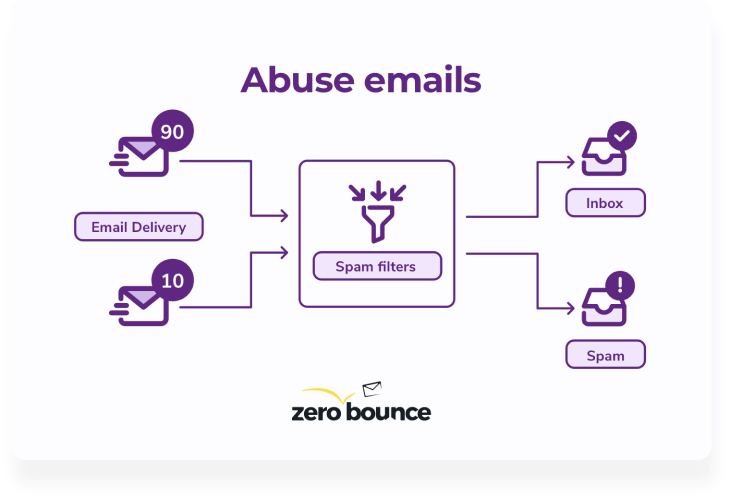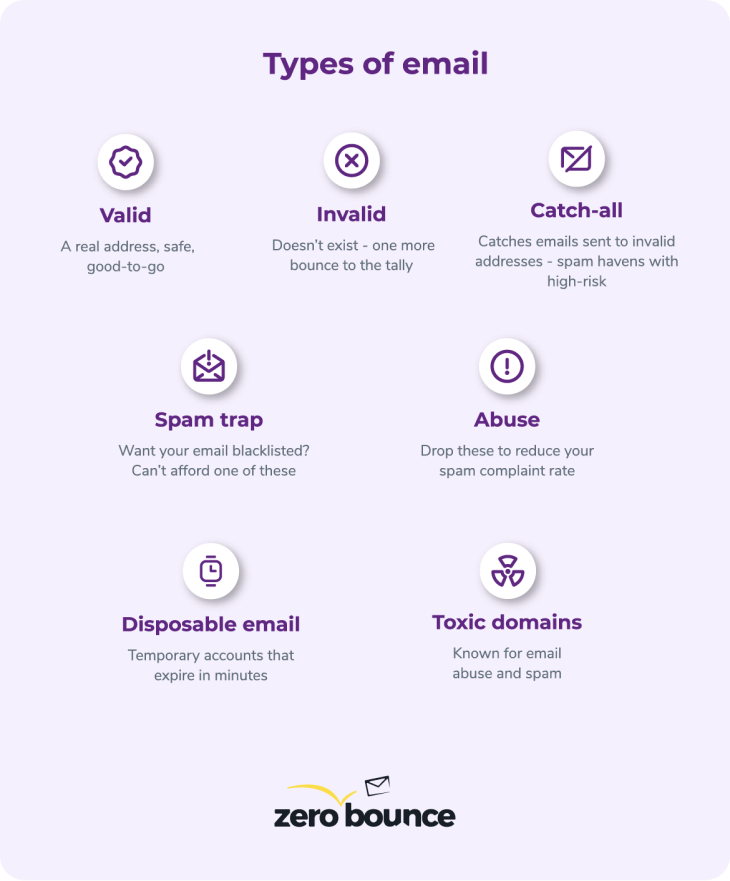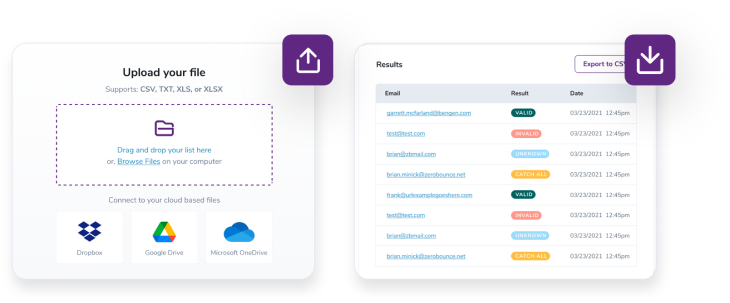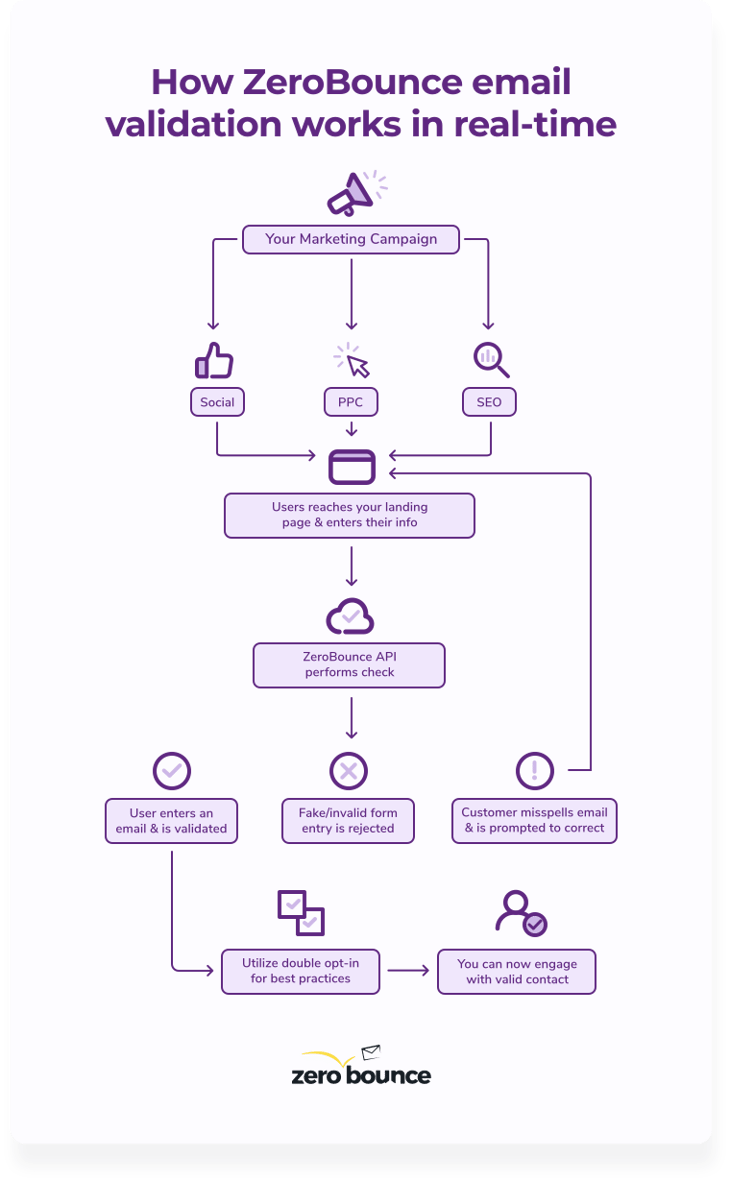A Marketer’s Guide to Abuse Emails
Abuse emails are prevalent in a world of buying and selling email lists.

The problem is that they can quickly destroy your email reputation. Keeping your contact list free of these risky emails is the only way to ensure inbox placement.
But first, let’s define what an abuse email is so that you can better understand what you’re up against.
What is an abuse email?
Abuse emails are email addresses belonging to people who habitually mark incoming messages as spam. They’re known complainers who report issues with email content regardless of quality or intention.
Marking a message as spam serves a purpose. It provides recipients with a way to alert their email service provider (ESP) to:
- Phishing scams
- Emails containing viruses or malware
- Suspicious emails from unknown senders
However, some recipients will likely hit the spam button for many incoming emails. Reasons for this might include the following:
- They didn’t sign up for your emails / you bought an email list
- They don’t remember signing up for your emails
- They press spam instead of using the unsubscribe button
- An unsubscribe button is not available
Are abuse emails on your list?
Curious if an address is an abuse email? Find out now
How abuse emails harm your email marketing
Abuse emails lead to spam complaints against your email domain.
While these may only seem mildly annoying, these complaints are detrimental to your email marketing efforts. Let’s closely examine what happens when abuse emails remain on your contact list.
Spam complaints impact sender reputation
Whenever someone marks your email messages as spam, it adds to your domain’s spam complaint rate.
Spam reports are a natural part of email marketing. Email service providers (ESP) allow for a 1% complaint rate. Anything higher than this looks suspicious and negatively affects your sender reputation.
Your sender reputation is a score out of one hundred that communicates your email behavior to inbox providers. Those with high reputations are trustworthy and will have an easier time reaching the inbox. Conversely, those with low reputations will struggle with deliverability.
Because abuse emails are likely to report spam, they harm your sender's reputation. Even if your content adheres to best sending practices, you risk needlessly increasing your spam complaint rate.
New messages are more likely to reach spam folders
Abuse emails make it harder to deliver messages to valid contacts. More spam complaints make you more likely to miss the inbox.
Receiving email servers will see your sender reputation and consider future emails from your domain as suspicious. There’s a strong chance your messages will hit a user’s spam folder even if you had no issue hitting the inbox in the past.

You will face account suspensions
When your domain has a low sender reputation, you will eventually face an account suspension from your ESP.
Every ESP has standards for its users regarding acceptable email-sending practices. As described above, most allow for no more than a 1% spam complaint rate. If you exceed this, they can suspend your account until you resolve the issue.
With a suspended account, you can no longer publish your email campaigns. You’ll need to utilize abuse email detection to locate risky emails and eliminate them from your list.
Your campaign metrics will be inaccurate
Abuse emails are lousy for accurately tracking campaign results.
Because these users are likely to report spam, they’re not significant indicators of email content quality. You may have a decent campaign, but poor clickthrough rates and spam reports make it look like you’re underperforming.
When analyzing a marketing venture, you want feedback from actual valid leads. Abusers will muddle your data and make it challenging to improve future emails.
How email validation assists with abuse email detection
You can take action against abuse emails with the help of an email validation service. It serves as an abuse email checker and will alert you to other risky emails on your list. Currently, our email validation service identifies the following email types:

Valid addresses are real, trustworthy and reliable to use for your email campaigns.

Sending to valid contacts will provide the following benefits:
- A low or zero bounce rate
- Prevent spam complaints
- Higher clicks and engagement rates
- Better campaign insights
- Preserve your sender reputation
There are two methods of using an email validation service.
First, upload your list to our email validation tool. It will scrub your list and identify the status of each email contact. Then, download your results and determine which emails to remove.

ZeroBounce also provides anti-greylisting technology to circumvent spam blockers and obtain an accurate validation result.
But it’s even better to abuse emails from entering your list altogether.
A real-time email validation API allows you to install the validator on your website, landing pages and wherever you collect email leads. When someone uses your form, it validates the address and instantly rejects abuse emails and other invalid or risky addresses.

Need a reliable abuse email checker?
Start cleaning your list now!
Validate up to 100 emails free
Related Links:
Other strategies to reduce spam complaint rate
Email validation is the best method of abuse email detection available. You can implement these additional strategies to reduce your spam complaints quickly.
Never buy an email list
It seems like an easy way to get leads. But, it’s the most significant source of abuse emails as these users did not opt into your content.
Use a double opt-in method
Sometimes, users accidentally end up on your mailing list. To prevent this, send a confirmation email to ensure their sign-up is intentional.
Make your unsubscribe button clearly visible
An unsubscribe is more desirable than spam complaints. Make it easy to opt out and keep your email list clean.
Keep your content on track
Don’t get overly experimental with new types of content. Ask users what content they want to keep your lists adequately segmented. Stick to what your users want to see.
Frequently asked questions
You can determine if an email is valid by using an email validation service or API. It will identify valid, invalid and risky email addresses, such as abuse emails. Any address with a “valid” status is legitimate.
Some emails that fall into risky categories are technically legitimate. However, like abuse emails, they greatly risk your email reputation and campaigns.
A variety of factors can cause your emails to land in the spam folder, including:
• Having a poor sender reputation
• Having a spam complaint rate higher than 1%
• The recipient previously marked your domain as spam
• Content containing too many spammy words or phrases
• Errors with email authentication (SPF, DMARC, and DKIM)
• Suspicious attachments or files that exceed amount or size limits
• Failure to provide an unsubscribe method
• Sending emails to unsubscribed users
All of these count as spammy email behaviors and quickly alert spam filters. Be sure to adhere to best email-sending practices and provide content to those who opt-in.
Emailing someone with a reported abuse email will likely result in spam complaints. The acceptable spam complaint rate is 1%.
You will have a negative email sender reputation if you exceed this complaint rate. When your reputation is poor, more emails land in the spam folder. Continued issues can prompt receiving servers to reject your messages entirely.
Finally, a high complaint rate and low reputation can lead to account suspensions. This will stop your campaigns in their track and prevent you from being able to deliver new content until you restore your standing.
A high spam complaint rate is anything higher than 1% or 1 in every 100 emails.
A spam complaint usually will unsubscribe the user from your email list. They must resubscribe if they wish to continue receiving your marketing messages. The user should mark the reported message as “Not Spam.”
Contents
- Overview to find more details about links
- What is an abuse email? to find more details about links
- How abuse emails harm your email marketing to find more details about links
- How email validation assists with abuse email detection to find more details about links
- Other strategies to reduce spam complaint rate to find more details about links
- Frequently asked questions to find more details about links